
If you’re looking to add a touch of beauty and elegance to your landscape, dogwood trees are an excellent choice. These trees are known for their stunning flowers, attractive foliage, and vibrant colors that can add a pop of color to any garden.
Whether you’re a seasoned gardener or a beginner, this complete guide to dogwood trees will help you learn everything you need to know about planting, growing, and caring for these stunning trees.
Dogwood trees are available in a variety of species, each with its unique features and characteristics.
Some species are known for their bright red or pink flowers, while others have stunning white blooms.
Regardless of the variety you choose, dogwood trees are relatively easy to grow and care for, making them an excellent choice for gardeners of all skill levels.
What are Dogwood Trees?
Dogwood trees are deciduous trees that belong to the genus Cornus, and they are known for their beautiful flowers, attractive bark, and colorful foliage.
There are many different species of dogwood trees, but the most popular are the flowering dogwood and the kousa dogwood.
Flowering dogwoods are known for their beautiful white or pink flowers that bloom in the spring, while kousa dogwoods have smaller flowers that bloom later in the season.
Both types of dogwood trees have attractive foliage and produce edible fruit that is enjoyed by birds and other wildlife.
Dogwood trees are typically small to medium-sized trees, growing to a height of around 20-30 feet.
They are hardy trees that can grow in a wide range of soil types and growing conditions, but they prefer moist, well-drained soil and partial shade.
When planting a dogwood tree, it’s important to dig a hole that is twice as wide as the root ball and to water the tree regularly until it becomes established.
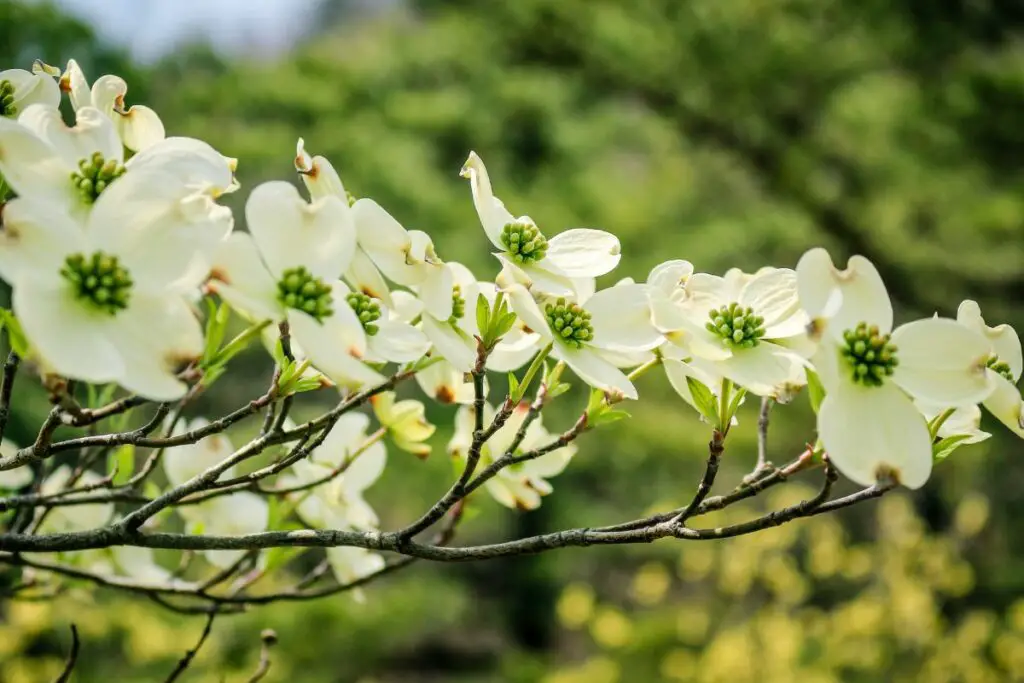
In addition to their beauty, dogwood trees are also valued for their wood, which is used to make a variety of products, including tool handles, golf club heads, and weaving shuttles.
The bark of the dogwood tree is also attractive and can be used for decorative purposes.
Overall, dogwood trees are a great addition to any garden. They are low-maintenance, attractive, and provide food and habitat for wildlife.
With the right care and growing conditions, your dogwood tree will thrive and provide you with years of enjoyment.
What is special about a dogwood tree?
When it comes to ornamental trees, dogwood trees are a popular choice for many gardeners. These trees are known for their stunning blooms, unique bark, and attractive foliage. Here are some of the things that make dogwood trees special:
- Beautiful flowers: One of the most striking features of a dogwood tree is its flowers. These blooms come in a variety of colors, including pink, white, and red, and can brighten up any landscape. The flowers typically appear in early spring and last for several weeks.
- Unique bark: Dogwood trees have a distinctive bark that is often described as “alligator skin.” This bark is grayish-brown in color and has a rough texture that adds interest to the tree’s appearance.
- Attractive foliage: In addition to their flowers and bark, dogwood trees have attractive foliage. The leaves are oval-shaped and come in shades of green, red, and purple. Some dogwood trees also have variegated leaves, which add even more visual interest.
- Adaptability: Dogwood trees are adaptable to a variety of soil types and can grow in both sun and shade. They are also relatively low-maintenance, making them a great choice for gardeners of all skill levels.
Overall, dogwood trees are a great addition to any landscape. Whether you’re looking for a tree with beautiful blooms, unique bark, or attractive foliage, a dogwood tree is sure to fit the bill.
Planting Dogwood Trees
Choosing the Right Location
When planting dogwood trees, it is important to choose the right location. Dogwoods prefer well-drained soil and partial shade, so look for a spot that gets morning sun and afternoon shade.
Avoid planting in areas with heavy foot traffic or near driveways where salt may accumulate.
Preparing the Soil
Before planting, prepare the soil by digging a hole twice as wide as the root ball and just as deep. Mix in compost or other organic matter to improve soil fertility and drainage.
Dogwoods prefer slightly acidic soil with a pH between 5.5 and 6.5.
Planting the Tree
To plant your dogwood tree, gently remove it from its container and loosen any tangled roots.
1)Place the tree in the hole and backfill with soil, tamping down lightly to remove any air pockets.
2) Water deeply and mulch around the base of the tree to retain moisture and suppress weeds.
It is best to plant dogwood trees in the spring or fall when the weather is mild and there is less stress on the tree.
If you are planting a bare-root tree, soak the roots in water for a few hours before planting to help them rehydrate.
When selecting a dogwood tree, consider the genus Cornus, which includes several species of dogwood trees.
The Pacific dogwood (Cornus nuttallii) is a popular choice for its showy white flowers and vibrant fall foliage.
Caring for Dogwood Trees
Proper care is essential for the health and beauty of your dogwood tree. Here are some tips to help you care for your tree:
Watering and Fertilizing
Watering is crucial for the survival of your dogwood tree, especially during the first few years after planting.
Water deeply once or twice a week, allowing the soil to dry slightly between watering. Established dogwoods are more drought-tolerant but still benefit from regular watering during dry spells.
Mulching with a 2-4 inch layer of organic mulch, such as wood chips or shredded bark, around the base of the tree can help retain moisture and suppress weeds.
When planting your dogwood tree, add plenty of organic matter to the soil and mix it with the existing soil using a garden fork.
BioAdvanced 12 Month Tree Feed

Tree and Shrub Protect and Feed, Granules.
Slow-release nitrogen fertilizer moves systemically from roots to branch tips
- INSECT & PEST KILLER
- SLOW-RELEASE FERTILIZER
- SYSTEMIC PROTECTION
- 12 MONTH PROTECTION
Also, add a general shrub or tree fertilizer into the mix. You can fertilize your tree in early spring before new growth begins or in late fall after the leaves have fallen.
Follow the instructions on the fertilizer package for the correct amount and method of application.
Pruning
Pruning is not necessary for the health of your dogwood tree, but it can help maintain its shape and promote better flowering.
Prune your tree in late winter or early spring before new growth begins. Remove any dead, diseased, or crossing branches.
You can also remove up to one-third of the tree’s branches to thin it out and improve air circulation.
Preventing Pests and Diseases
Dogwood trees are susceptible to several pests and diseases, including dogwood anthracnose and mildew.
To prevent these problems, make sure your tree is planted in well-draining soil and receives adequate sunlight and air circulation.
Avoid overhead watering, as this can promote fungal growth. If you notice any signs of disease, such as brown spots on the leaves or powdery mildew, treat your tree with a fungicide according to the instructions on the label.
You can also consult a professional arborist for advice on how to care for your tree.
Are Dogwood Trees a good idea in your backyard?
Pro’s
- Beautiful flowers
- They attract wildlife
- Easy to grow
- Provides shade
- Ever changing colors
- Shallow Roots
Con’s
- Susceptible to disease
- Limited growth
- Requires specific soil conditions
- Just don’t
- Prone to damage
Is a Dogwood Fast Growing?
While some dogwood varieties grow at a moderate pace, others are quite slow to grow. The speed of growth can depend on the specific species, as well as the growing conditions.
The pagoda dogwood (Cornus alternifolia) is a slow growing species that typically reaches a height of about 20 feet. The larger wedding cake dogwood (Cornus controversa) can take up to 20 years to reach its full height of 40 feet. However, other dogwood species may grow at a faster rate.
It’s important to note that while a dogwood may not be the fastest growing tree, it can still provide a beautiful addition to your landscape.
Dogwoods are known for their stunning flowers, which bloom in shades of pink, white, and red. They also offer attractive foliage that can turn shades of red and purple in the fall.
If you’re looking for a tree that will provide quick shade or privacy, then a dogwood may not be the best choice.
However, if you’re looking for a tree that will add beauty and interest to your landscape over time, then a dogwood could be a great option.
Do Dogwood Trees Have Invasive Roots?
Dogwood trees have a shallow root system that spreads out horizontally rather than deeply. The roots of dogwood trees are not considered invasive, but they do require a lot of water to thrive.
The shallow roots of the Dogwood run the risk of drying out, so it is important to water the tree at least twice a week in most areas and more during dry spells.
According to The Tree Center, dogwoods prefer slightly acidic loam soil that is well-drained and moist but not overly wet.
They are adaptable to many soil types but are less tolerant of heavy clay soils that retain too much water. Therefore, it is important to plant dogwood trees in well-draining soil to prevent the roots from rotting.
Overall, dogwood trees are not known for having invasive roots, but it is important to plant them in the right soil and to water them regularly to ensure their health and longevity.
Dogwood Tree Varieties
There are many varieties of dogwood trees, each with their own unique characteristics. Here are some of the most popular:
Flowering Dogwood
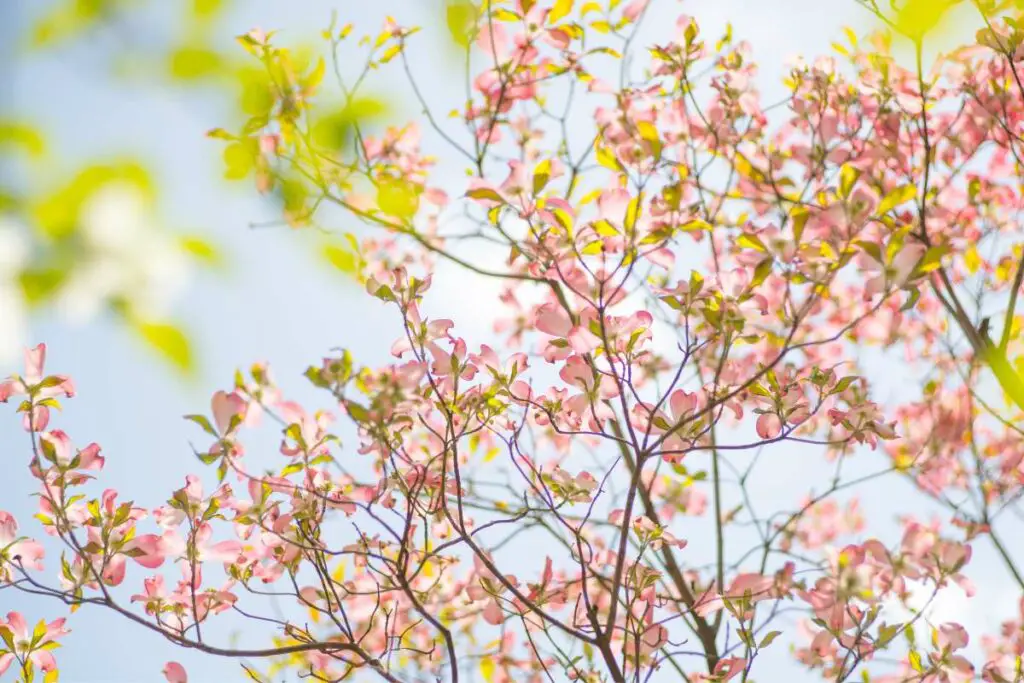
The flowering dogwood is the most well-known variety of dogwood tree. This tree produces beautiful white, pink, or red flowers in the spring, and its leaves turn a vibrant red in the fall. The flowering dogwood is a popular choice for landscaping due to its stunning appearance.
Kousa Dogwood

The Kousa dogwood is a smaller variety of dogwood tree that is native to Asia. This tree produces small yellow flowers in the spring, and its leaves turn a beautiful reddish-purple in the fall. The Kousa dogwood also produces edible fruit that is often used in jams and jellies.
Cornelian Cherry
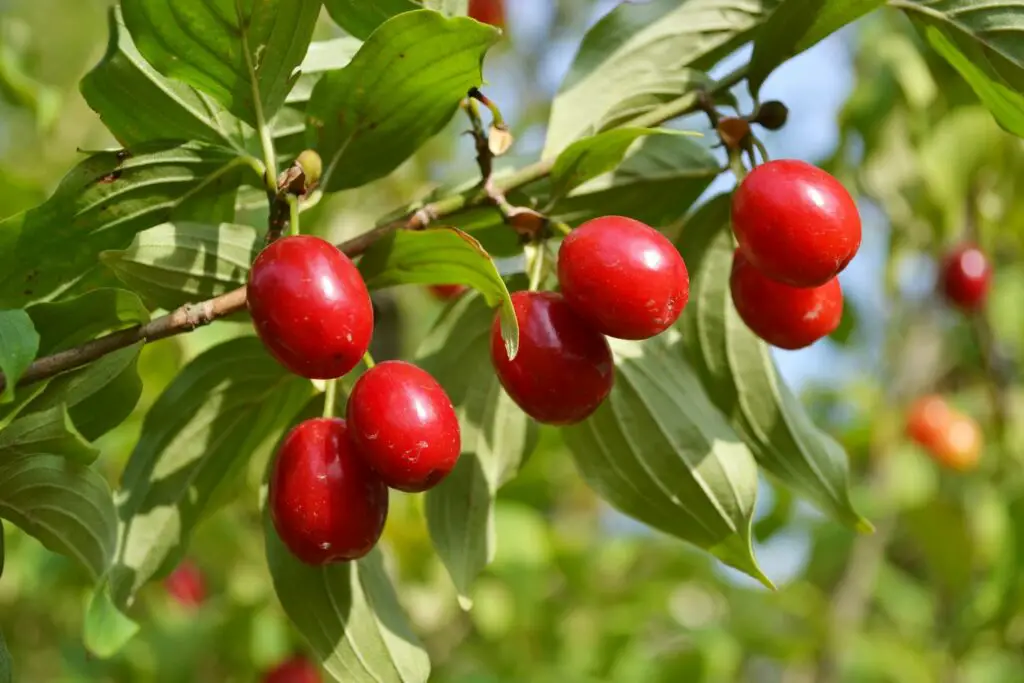
The Cornelian cherry dogwood is a shrub-like tree that produces beautiful yellow flowers in the early spring. This variety of dogwood tree also produces edible fruit that is often used in preserves and syrups.
Pagoda Dogwood
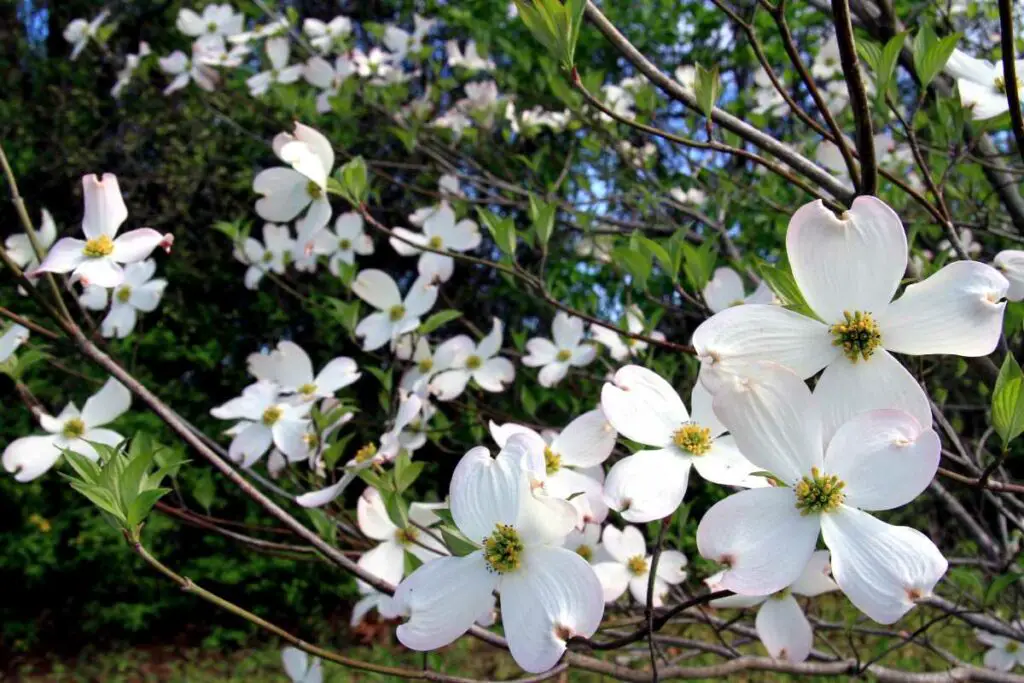
The Pagoda dogwood is a small, multi-stemmed tree that produces beautiful white flowers in the spring. This tree also produces red berries in the fall that are a favorite of many birds.
Red Twig Dogwood
The Red Twig dogwood is a shrub-like tree that produces beautiful white flowers in the spring. This variety of dogwood tree is known for its bright red branches, which add a pop of color to any landscape.
When choosing a dogwood tree variety, consider the size of your yard, the amount of sunlight the tree will receive, and the colors you want to see in your landscape. No matter which variety you choose, a dogwood tree is sure to add beauty and interest to your outdoor space.
Using Dogwood Trees in Landscapes
Designing with Dogwood Trees
Dogwood trees are popular choices for landscape design due to their attractive flowers, fall color, and interesting bark.
They come in different varieties, including shrub or tree form, and range in height from 15 to 40 feet. When designing with dogwood trees, consider their size, shape, and color.
Choose a location that provides enough space for the tree to grow to its full size and allows it to receive the right amount of sunlight.
Dogwood trees look great when planted in groups or as a single specimen tree. They can be used as focal points, borders, or as screens to create privacy.
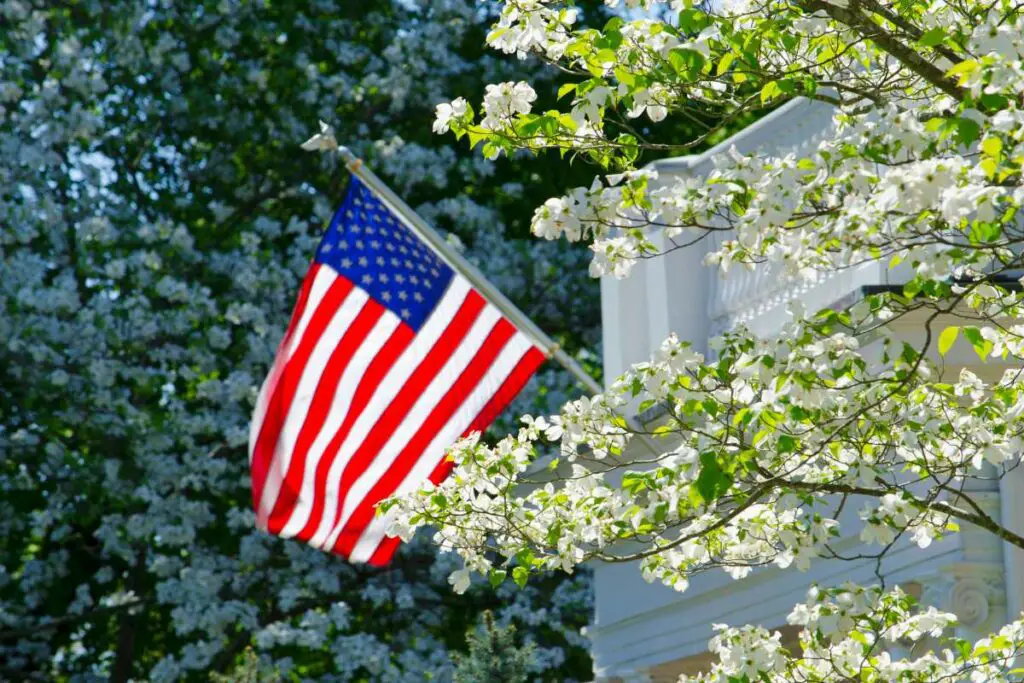
Companion Plants
Dogwood trees can be paired with companion plants to create a cohesive and attractive landscape design.
Consider planting ground covers, such as hostas or ferns, around the base of the tree to add texture and color.
You can also plant perennials, such as astilbes or daylilies, around the tree to add seasonal color. When choosing companion plants, consider their growing requirements and make sure they are compatible with the dogwood tree.
Dogwood Trees for Wildlife
Dogwood trees provide food and shelter for wildlife, including birds and small mammals. Some dogwood trees produce fruits that are attractive to birds, such as the American dogwood (Cornus florida) and the Kousa dogwood (Cornus kousa).
The fruits are edible and can be used to make jams, jellies, and beverages. The bracts of the dogwood tree also provide shelter for birds and small mammals.
When designing with dogwood trees, consider their value to wildlife and choose a location that provides enough space for the tree to grow and attract wildlife.
Overall, dogwood trees are versatile and attractive options for landscape design. They can be used as focal points or as part of a larger design scheme.
When designing with dogwood trees, consider their size, shape, and color, and pair them with companion plants to create an attractive and cohesive design.
Additionally, dogwood trees provide food and shelter for wildlife, making them a valuable addition to any landscape.
Final thoughts ?
Now that you have learned all about dogwood trees, you are ready to add one to your garden or landscape.
Remember to choose a location with the right amount of sunlight and well-draining soil. You can choose from a variety of dogwood species, each with unique characteristics and benefits.
When caring for your dogwood tree, make sure to water it regularly, especially during hot and dry weather.
Prune it in late winter or early spring to promote healthy growth and remove any diseased or damaged branches.
Overall, dogwood trees are a beautiful addition to any outdoor space. They provide year-round interest with their stunning flowers, colorful foliage, and attractive bark. With proper care and maintenance, your dogwood tree can thrive for many years to come.


